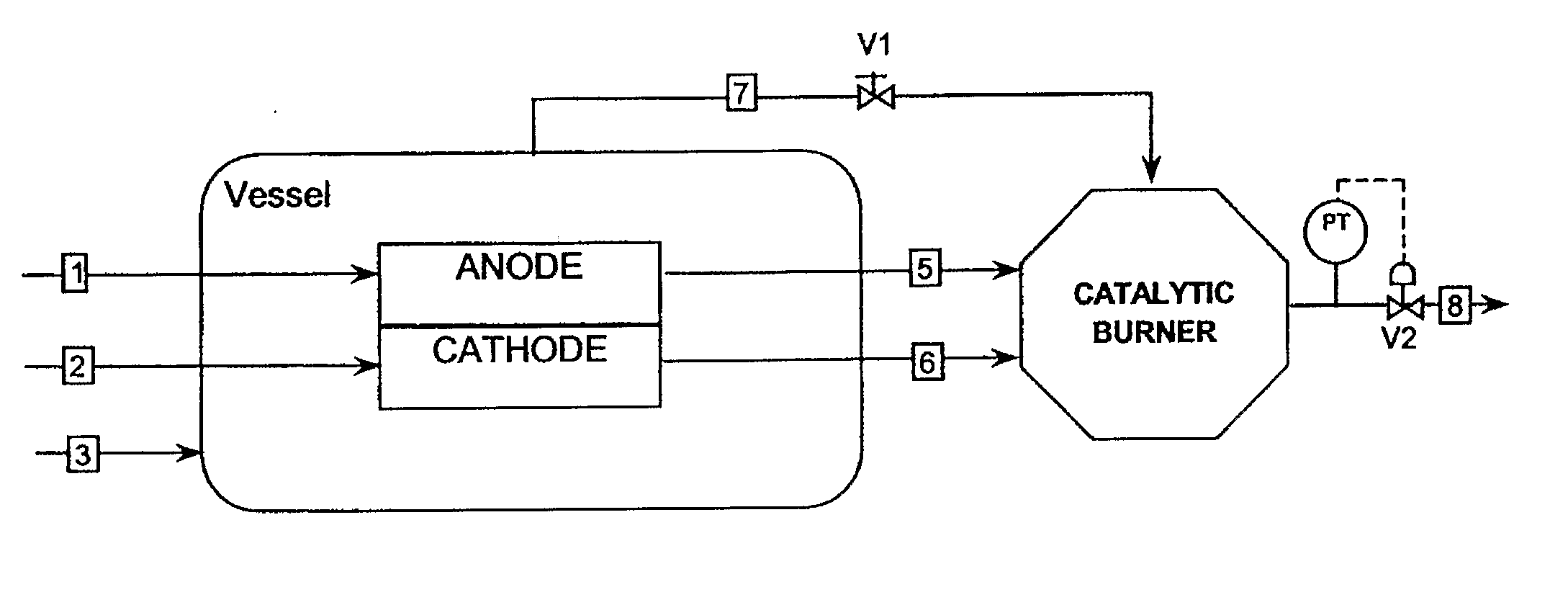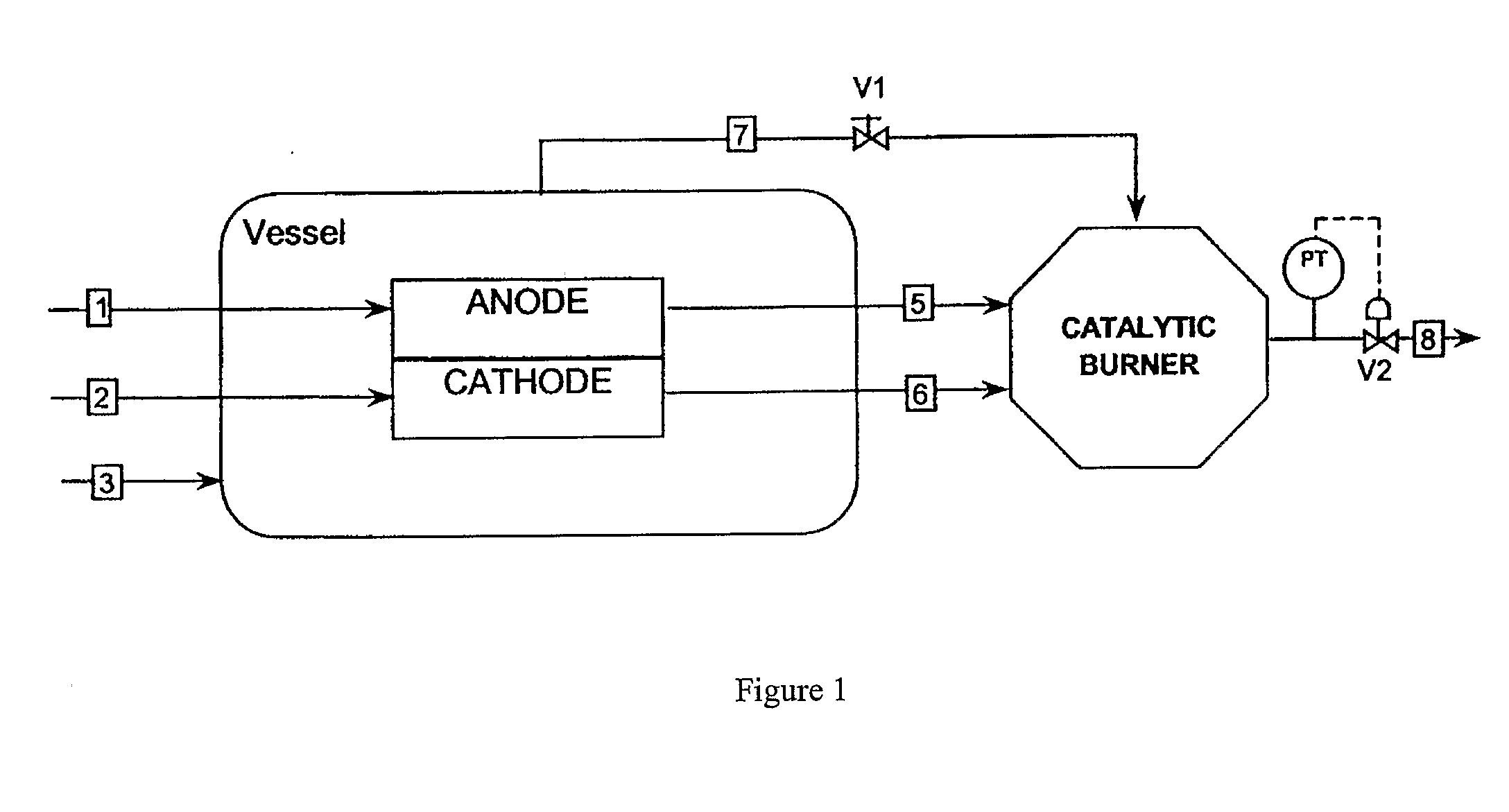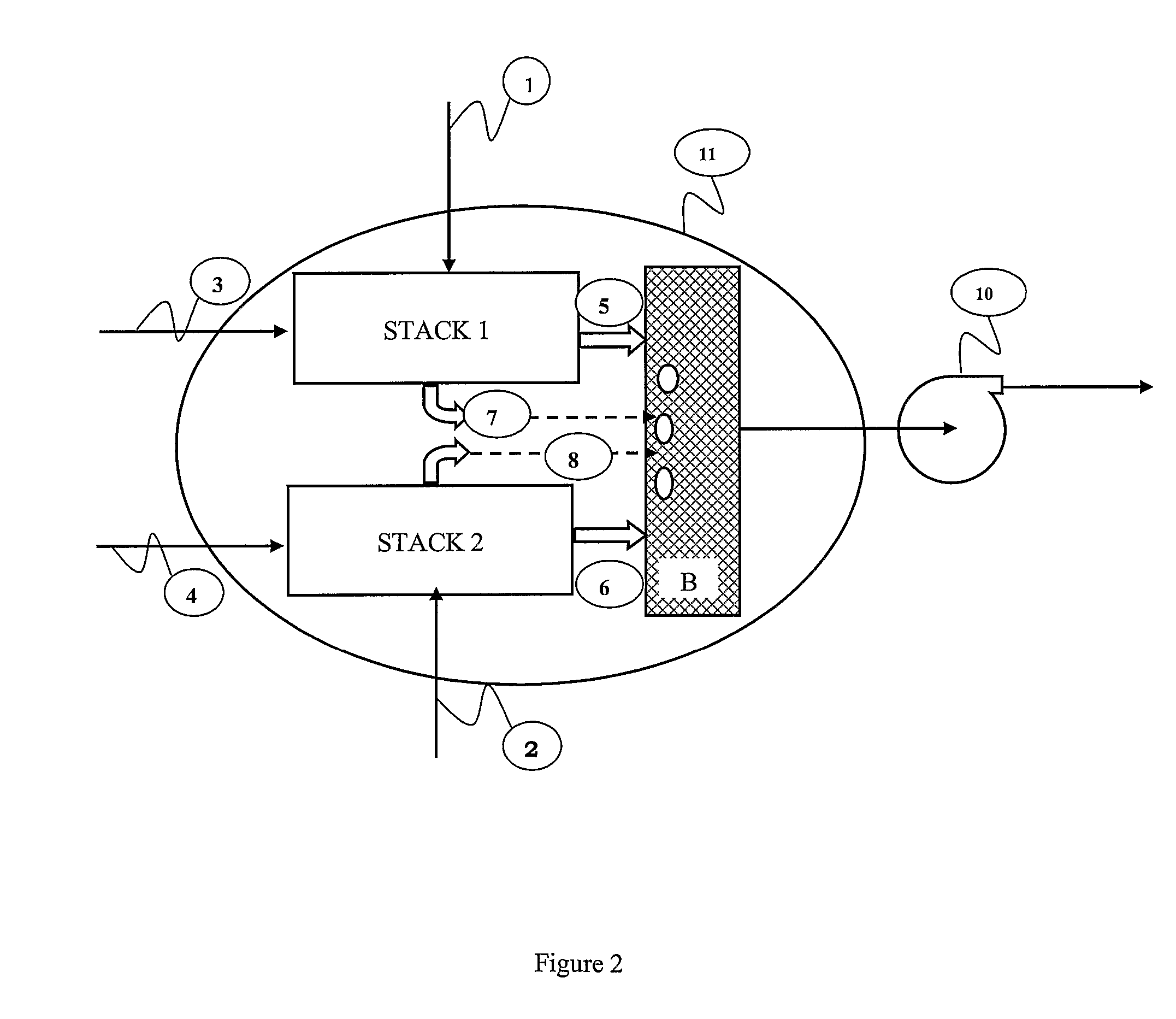Deferential Presssure Control Method for Molten Carbonates Fuel Cell Power Plants
a technology of molten carbonate and presssure control, which is applied in the direction of fuel cell auxiliaries, fuel cells, fused electrolyte fuel cells, etc., can solve the problems of reducing the efficiency and life expectancy reducing the efficiency of the fuel cell, and the design of the fuel cell system is quite complex and can vary significantly. , to achieve the effect of avoiding an excessive differential pressure, ensuring dynamic pressure balance, and substantially reducing costs
- Summary
- Abstract
- Description
- Claims
- Application Information
AI Technical Summary
Benefits of technology
Problems solved by technology
Method used
Image
Examples
Embodiment Construction
[0037] The preferred embodiments of the present invention will be described with reference to FIG. 1.
[0038] A pressurised fuel feed line 1 is connected to the anode of the fuel cell stack. A pressurised oxidant feed line 2 is introduced into the cathode and inert gas (N2) air or other mixtures like cathodic exhaust is fed to the containment vessel through line 3.
[0039] The system pressure is controlled by the valve V2 downstream of the catalytic burner, the pressure sensor and pressure controller.
[0040] Valve V1, located on the vessel exhaust line, maintains constant the required differential pressure between the vessel and the fuel cell reactants in order to prevent leakage of reactants to the vessel atmosphere.
[0041] In this case, the anode, the cathode and the vessel exits are all at the same pressure, which is balanced and equilibrated inside the catalytic burner that acts as reference point. Anode and cathode pressures are always equilibrated unless pressure drop occurs in ...
PUM
| Property | Measurement | Unit |
|---|---|---|
| temperature | aaaaa | aaaaa |
| pressure | aaaaa | aaaaa |
| differential pressure | aaaaa | aaaaa |
Abstract
Description
Claims
Application Information
 Login to View More
Login to View More - R&D
- Intellectual Property
- Life Sciences
- Materials
- Tech Scout
- Unparalleled Data Quality
- Higher Quality Content
- 60% Fewer Hallucinations
Browse by: Latest US Patents, China's latest patents, Technical Efficacy Thesaurus, Application Domain, Technology Topic, Popular Technical Reports.
© 2025 PatSnap. All rights reserved.Legal|Privacy policy|Modern Slavery Act Transparency Statement|Sitemap|About US| Contact US: help@patsnap.com



